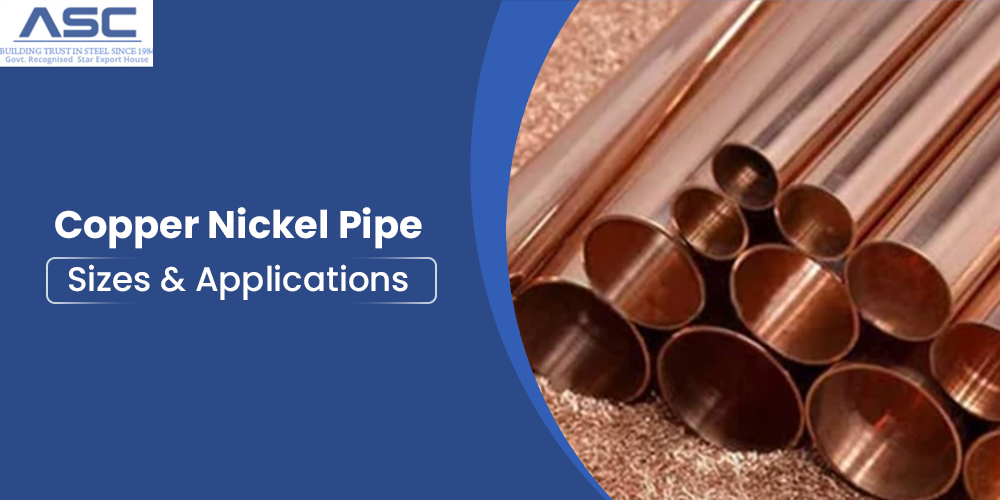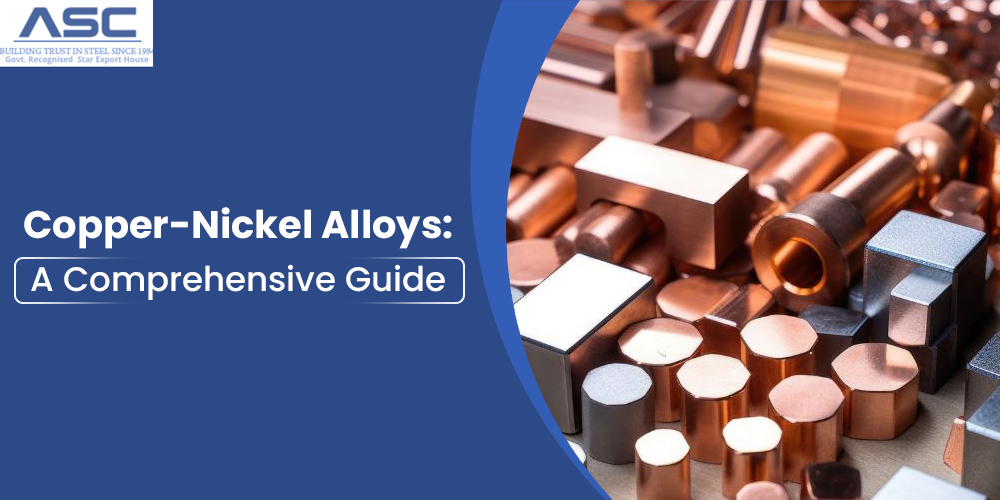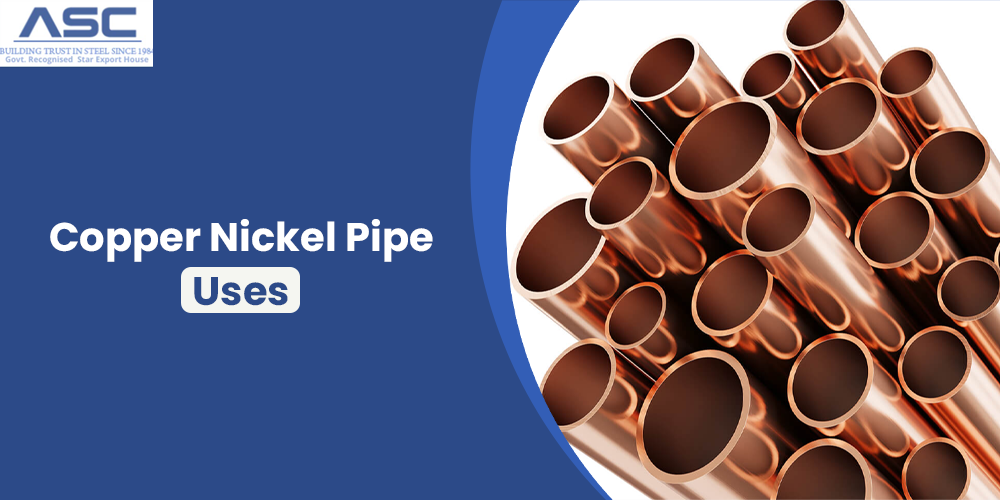Copper-Nickel Alloy Properties & Applications
Posted on June 11, 2020 at 3:05 PM

Properties of Copper-Nickel Alloys Copper (Cu) and Nickel (Ni), adjacent elements within the periodic system, are closely related and completely miscible. Sometimes called cupronickels, there exists a variety of various copper-nickel alloys possessing different properties and useful during a range of various applications. A number of the better-known copper-nickel alloys include:
- Copper with 10% nickel
- Copper with 30% nickel
- Copper with 25% nickel with 0.05-0.4% manganese
- Copper with 45% nickel (also referred to as constantan)
Key Properties
Copper-nickel alloy properties vary with composition. Copper 90/10 and Copper 70/30 both show outstanding resistance to corrosion, particularly seawater; however, Copper 70/30 is stronger and has superior resistance to impingement corrosion. On the opposite hand, slightly superior resistance to biofouling is exhibited by the 90/10 alloy. Copper rich alloys are ductile, hardened only by cold working, highly immune to corrosion, strong and possess a low-temperature co-efficient of electric resistance. The nickel content of those alloys also enables them to retain their strength at elevated temperatures compared with nickel-free copper alloys. Copper-nickels have set up properties that show high protection from seawater consumption and biofouling. This remembers protection from chlorides for terms of pitting, fissure consumption, and stress erosion breaking, even in more blazing atmospheres. Great warm conductivities and malleability down to cryogenic temperatures are additionally significant highlights in their scope of uses. The higher nickel compounds and those with explicit alloying augmentations permit higher stream rates and quality.Significant properties of copper-nickel compounds are summed up in the connections beneath:
Corrosion Resistance: Surface Film; General/Localized/Pitting and Crevice Corrosion; Stress Corrosion Cracking; Velocity Effects; Sand Erosion; Galvanic Properties; Ammonia; Sulfides; Seawater Treatments; Corrosion in Condenser and Heat Exchange Systems;
Biofouling: Development; Resistance; Reasoning; Micro fouling; Tubing, Cladding and Offshore Structures; Removal; Effects on Corrosion; Effects on Plant Operations;
Environmental: Leaching; Touch Contact;
As a result of their novel valuable properties, copper-nickel compounds are determined for marine designing applications, for example, in shipbuilding and fix, desalination plants, seaward oil and gas structures, and force age. Inside these segments, copper-nickels are utilized and intended for seawater framework segments, including condensers and warmth exchangers and sprinkle zone sheathing, and have likewise been utilized for the more novel use of pontoon structures. In the non-marine condition, copper-nickel amalgams are appropriate for coinage, cryogenic applications, and antimicrobial touch surface items in marine and non-marine situations.Applications of Copper-Nickel composites
Ocean Water Condensor Systems And Desalination Plants
Because of the great protection from ocean water consumption, the copper-nickel composite Copper 90/10 and copper-nickel compound Copper 70/30 are utilized for ocean water condenser frameworks and in desalination plants, just as channel work in concoction plants.Car Applications
Because of the way that the copper-nickel composite Copper 90/10 requires no surface security and thus gives additional wellbeing, this copper-nickel combination is in effect progressively utilized for brake and pressure-driven suspension frameworks and cooling frameworks in vehicles and business vehicles.Marine Applications
The great protection from biofouling and ocean water erosion obstruction of the copper-nickel amalgams, Copper Nickel 90/10 and Copper Nickel 70/30 composites have led to its utilization in applications, for example, cladding for boats' bodies, legs of oil rig stages, and ocean water consumption screens.Coins
The copper-nickel combinations made out of copper with 25% nickel with 0.05-0.4% manganese is regularly utilized for the production of coins, decorations, and other semi-important applications.Opposition Wire
Because of the exceptionally low-temperature co-productive of electrical resistivity, the copper-nickel composites made out of copper with a 45% nickel combination is utilized for obstruction wire in high accuracy resistors. This property of copper-nickel combinations permits the resistor to work at the very same opposition paying little heed to temperature.Thermocouples
The copper-nickel composites made out of copper-45% nickel compound is likewise utilized for thermocouples as it builds up a high and uniform EMF when combined with different metals, for example, copper and iron.Different Applications
Copper-nickel composites are likewise utilized in cooling circuits, ammo, ocean water consumption safe gatherings, condenser tubes.Composition
The most common copper-nickel alloys being 90/10 cupronickel and 70/30 cupronickel, the chemical composition of both are given below.Cupro-Nickel 90/10 Chemical Composition
| Copper | Nickel | Iron | Manganese |
|---|---|---|---|
| 86 – 89.7% | 9.0 – 11.0% | 1.0 – 2.0% | 0.3 – 1.0% |
Copper Nickel 70/30 Chemical Composition
| Copper | Nickel | Iron | Manganese |
|---|---|---|---|
| 70.1 – 65.5% | 29.0 – 32.0% | 0.5 – 1.5% | 0.4 – 1.0% |
Physical Properties
| Color/Appearance | Luster | Melting point | Density | State of matter at room temperature (normal phase) | Thermal Conductivity | Electrical Conductivity | Resistivity | Ductility | Malleability | Tensile strength | Young’s modulus |
|---|---|---|---|---|---|---|---|---|---|---|---|
| Silvery | Metallic | 1170 – 1240°C, 2140 – 2260°F | 8.5 – 8.95 mg m3 | Solid | 19 – 66 W/(m K) | 5% IACS | 50X10-8 ohm-m | Yes | Yes | 267 – 624 MPa | 120 – 156 GPa |
Environmental Properties
| Resistance Factors | 1=Poor 5=Excellent | Flammability | Fresh Water | Organic Solvents | Oxidation at 500C | Sea Water | Strong Acid | Strong Alkalis | UV | Wear | Weak Acid | Weak Alkalis |
|---|---|---|---|---|---|---|---|---|---|---|---|---|
| 5 | 5 | 5 | 3 | 5 | 2 | 5 | 5 | 5 | 4 | 5 |


